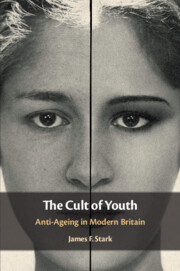5 - Exercise, 1930–1939
Published online by Cambridge University Press: 28 February 2020
Summary
The physical culture movement, prominent during the second half of the nineteenth century, had far-reaching effects on rejuvenation in Britain. This chapter considers how regimes of exercise came to be seen as essential components in maintaining a state of youth and beauty (particularly for women). The cosmetics pioneer Elizabeth Arden attempted to capitalise on the popularity of the mass exercise movement by opening an ‘exercise salon’ at her exclusive Bond Street beauty parlour during the early 1930s. At the same time, the Women’s League for Health and Beauty advocated group exercise which included dance, callisthenics and remedial, slimming and rhythmical exercise to music. These mass-participation franchises brought an affordable alternative to expensive personal training for the working classes. The expansion of organised exercise, fuelled by a vibrant youth culture, led to the youthful body becoming an object of celebration. The ideal physique – youthful, lithe and strong – was now held up as an attainable goal for all. Indeed, it was seen as a true expression of the natural instinct of the body, drawing inspiration from naturalistic movements in politics and culture.
- Type
- Chapter
- Information
- The Cult of YouthAnti-Ageing in Modern Britain, pp. 138 - 169Publisher: Cambridge University PressPrint publication year: 2020



